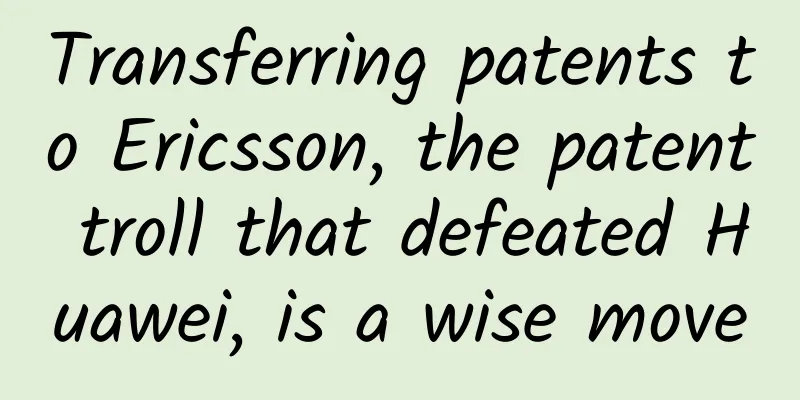Super "charming" elementary particles, triggering a missing mystery?

|
Neutrinos may be the most fascinating elementary particles. Since they were first proposed, they have constantly refreshed human cognition. Even now, there are still many mysteries about neutrinos that have not been solved. Today we will talk about one of them. A large number of neutrinos pass through our bodies every moment. Where is the biggest source of these neutrinos? The sun. The sun is a huge nuclear fusion reactor. In layman's terms, the sun is a hydrogen bomb that is constantly exploding. The fusion reaction on the sun consumes 620 million tons of hydrogen per second, and a large number of neutrinos are produced in this process. We can roughly calculate the number of neutrinos it produces based on the theoretical model of the sun. Strangely, the number of neutrinos we actually detected through experiments is only one-third of the theoretical value. This incident was called the "mystery of the missing solar neutrinos" at the time. Specifically, people discovered this in the 1970s. Although neutrinos hardly react with any substance, there is still something that can react with neutrinos, which is chlorine-37. Neutrinos can react with chlorine-37 to produce argon-37 and electrons, and argon is an inert gas. This incident inspired a person at the time, who was called Davis, an American physicist. Davis decided to use tetrachloroethylene as a detection medium. Tetrachloroethylene is the main component of detergents. Generally, dry cleaners use this. It has a pungent sweet smell and is volatile. High concentrations can cause poisoning and cancer. When Davis purchased tetrachloroethylene in large quantities, people thought he was going to open a laundry shop. The laboratory built a laboratory in the Homestake Gold Mine in the United States, 1,500 meters underground, and mixed more than 600 tons of tetrachloroethylene solution. As long as chlorine turns into argon, gas will be generated, and a small bubble will emerge, which can prove that a neutrino and chlorine element have collided, but for the same reason, the probability of neutrino collision is too low. So Davis stayed in the underground mine for more than 30 years, and only detected about 2,000 neutrinos in these 30 years. But it was the data of these 2,000 neutrinos that people discovered the "mystery of the missing solar neutrinos", which was really not easy. There is also a physicist from Japan named Masatoshi Koshiba. He conducted an experiment in a 1,000-meter-deep mine in Japan, using 50,000 tons of pure water and more than 10,000 photomultiplier tubes. When neutrinos collide with the nuclei in the pure water, a light blue glow will be emitted. This phenomenon is called Cherenkov radiation. Then use a detector to detect this weak blue light. As long as it is detected, it means that a neutrino has collided. This probability is still very low, but Masatoshi Koshiba is much luckier than Davis. His experiment officially began at the end of 1986. In early 1987, on February 24, 1987, something happened. A supernova in the Large Magellanic Cloud exploded. This is the brightest supernova explosion observed since Kepler's supernova in 1604. The electromagnetic radiation it brings can even illuminate the entire galaxy, and it usually lasts for several weeks or months. This supernova in 1987 was observed by many astronomers. This was the luck of Masatoshi Koshiba. On that day, he suddenly discovered that a large number of neutrinos were detected in his Kamioka Laboratory. It was called a large number, but it was actually 13, which was many times more than the occasional one or two at ordinary times! It felt wrong. Sure enough, three hours later, someone called and said that a supernova exploded in the Large Magellanic Cloud. This feeling is absolutely amazing. This supernova is 168,000 light-years away from us, which means that Masatoshi Koshiba detected neutrinos produced at least 168,000 years ago! The 2002 Nobel Prize in Physics decided to award this year's Nobel Prize to Davis and Koshiba Masatoshi. In 2002, Davis was already 88 years old, and Koshiba Masatoshi was already 76 years old. According to the experimental data of these two people, they both confirmed the "mystery of the missing solar neutrinos", that is, the neutrinos from the sun inexplicably decreased by two-thirds. Where did they go? The answer to this question was not given until recent years. People found that there are not only one kind of neutrino, but three kinds, namely electron neutrinos, muon neutrinos and tau neutrinos. Davis and Koshiba only detected electron neutrinos in the experiment, which naturally decreased by two-thirds. Moreover, these three types of neutrinos can also transform into each other over time. This process is called neutrino oscillation. If neutrinos can oscillate, they must have rest mass, so many physicists have been studying this topic in recent years. The first person to prove neutrino oscillation through experiments was Koshiba Masatoshi's student Kajita Takaaki, and the experimental location was the Kamioka Laboratory used by Koshiba Masatoshi. Another physicist is Arthur McDonald of Canada. He and Takaaki Kajita jointly won the 2015 Nobel Prize in Physics for discovering neutrino oscillations in their experiments, thus proving that neutrinos have mass. The most advanced neutrino observatory is located under the ice in Antarctica. It is called IceCube and was completed on December 8, 2010. On July 12, 2018, the IceCube Neutrino Observatory announced the first successful confirmation of the source of high-energy cosmic neutrinos. Humans detected a neutrino emitted from 3.7 billion light-years away. This is also the first time in human history that a neutrino detector has been used to locate an object in space. However, there are still many mysteries about neutrinos that have not been solved, such as whether there is a fourth type of neutrino? Is the antiparticle of neutrino itself? In other words, is the neutrino a Majorana particle? Is the neutrino dark matter? And so on. We need to wait for the answers to these mysteries. Author: Mommy says popular science creator Reviewer: Luo Huiqian, Associate Researcher, Institute of Physics, Chinese Academy of Sciences The article is produced by Science Popularization China-Creation Cultivation Program. Please indicate the source when reprinting. |
>>: Horse racing, live pigeon shooting... a list of the weird Olympic sports that have disappeared
Recommend
How to create a Zhuhai food ordering app? How much does it cost to develop a food ordering app?
The catering industry has become the first choice...
Sorry, blue is beautiful, but I refuse blue food...
Why do blue foods make people lose their appetite...
Tang Jialu: 74-year-old ancient technology enthusiast restores historical "artifacts"
The book "Heavenly Creations" written b...
Working is actually a hundred times harder than starting a business
In fact, I really hate topics like entrepreneursh...
Is Baidu Youqianhua legitimate? Will the loan affect the mortgage in the future?
Young people nowadays have developed the concept ...
【Zeng Dapeng】Dapeng's complete trading system
[Zeng Dapeng] Introduction to Dapeng's complet...
KOL is too expensive, do you know more about KOC marketing?
There is not enough budget to continue looking fo...
Zotye T500 with original design and regular price starting at RMB 80,000 may be launched in March
Previously, Zotye was always labeled as a "c...
Zhao Honglin - A Hundred-part Introduction to the Chaos Theory
Zhao Honglin - Introduction to the resources of t...
iPad cutout is more powerful than PC. The automatic cutout of iPad version of PS is amazing.
Although Apple claims that the iPad Pro is a prod...
Youzi WeChat video account novel monetization project, zero foundation can also earn more than 10,000 yuan a month
Youzi WeChat video account novel monetization pro...
Watermelon or grapes? No, it's gooseberries!
"He couldn't imagine a manor, a place of...
Does participating in a clinical trial mean being a guinea pig? Uncovering the pros and cons of drug clinical trials
Author: Zheng Xin, Wang Weicong, Bai Hua As a res...
Private Domain Traffic Collection System Course (Friends Circle + Community + Traffic Layout Marketing) 12 lessons completed
If you want to continue to get the old results, c...
Report on the changes in mobile Internet users’ habits: What are the opportunities behind the shift from general social interaction to in-depth services?
The mobile Internet is moving from online applica...



![[Dry stuff!] 】How to save money and improve efficiency in advertising? Data optimization "three axes"](/upload/images/67cc277a7d0e5.webp)





